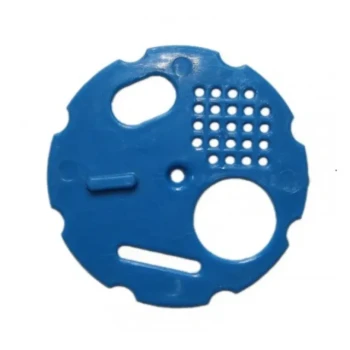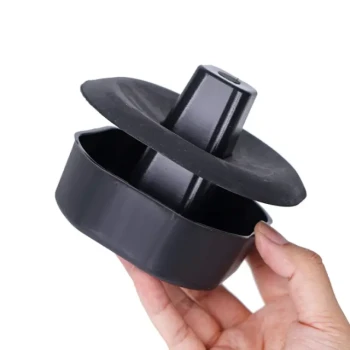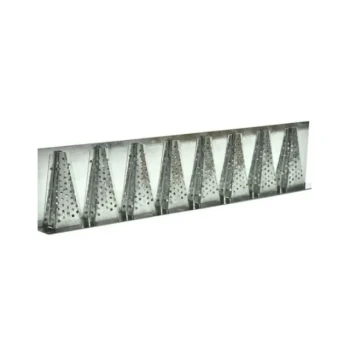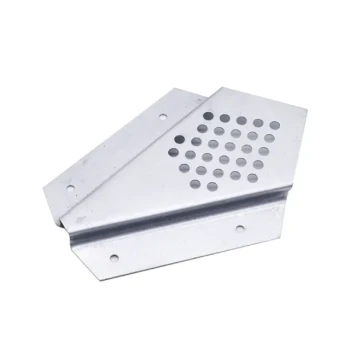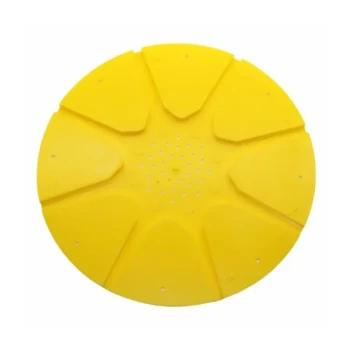The four entrance options provided by a steel entrance disc for a beehive are open access, queen excluder, ventilation, and closed. Each setting is designed to give the beekeeper precise control over hive traffic, protection, and airflow depending on the season and specific needs of the colony.
The core function of an entrance disc is not just to open or close the hive, but to provide strategic control. Mastering these four settings allows a beekeeper to effectively manage colony defense, prevent swarming, and ensure proper environmental conditions throughout the year.
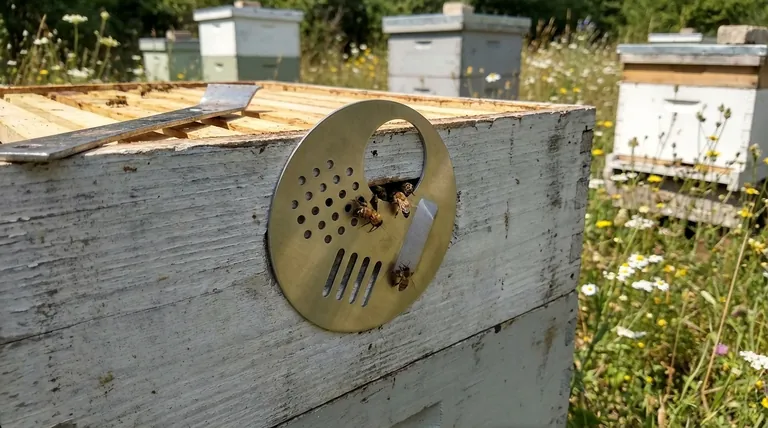
Understanding the Purpose of Each Setting
A beehive entrance is the gateway to the colony. Controlling it is fundamental to beekeeping. The steel entrance disc is a simple, rotating tool that provides four distinct functionalities for managing this critical space.
The "Open Access" Setting
The fully open setting provides the largest possible entrance for the bees. This maximizes traffic flow in and out of the hive.
This is the standard setting during periods of high activity, such as the main nectar flow in late spring and summer. It prevents bottlenecks, allowing foraging bees to work as efficiently as possible.
The "Queen Excluder" Setting
This setting reduces the entrance size to a series of smaller holes or a slot. These openings are large enough for worker bees to pass through but too small for the larger queen and drones.
Its primary use is for swarm prevention or during queen introductions. It ensures the queen cannot leave the hive, which is critical when managing a colony's reproductive cycle or trying to prevent the loss of a newly introduced queen.
The "Ventilation" Setting
The ventilation option consists of a pattern of very small holes. These holes are too small for any bees to pass through but are large enough to allow for significant airflow.
This is crucial during winter to prevent moisture buildup, which can be fatal to a colony. It is also used when transporting a hive to prevent overheating while keeping the bees securely inside.
The "Closed" Setting
The fully closed setting completely seals the hive entrance. No bees can enter or exit, and airflow is minimal.
This option is used for short-term situations only, such as moving the hive a short distance or protecting the colony from nearby pesticide spraying. It is critical to not leave a hive fully closed for long, especially in warm weather, as it can quickly overheat.
Key Considerations and Trade-offs
While the entrance disc is a versatile tool, using the wrong setting at the wrong time can harm the colony. Understanding the implications of each choice is essential for responsible hive management.
Impact on Hive Defense
A fully open entrance can be difficult for a smaller or weaker colony to defend against pests like wasps, hornets, or robbing bees from other hives. In these cases, a partially reduced entrance (not a specific setting on the disc, but achievable with other reducers) is often wiser.
Swarm Management vs. Mating Flights
Using the queen excluder setting is effective for preventing a queen from leaving with a swarm. However, it will also prevent a new virgin queen from leaving on her essential mating flights, which would render the colony queenless and doomed.
Ventilation vs. Temperature Control
While the ventilation setting is excellent for managing moisture, it can allow for more heat loss during winter. Beekeepers must balance the need for dry air with the colony's need to maintain a stable cluster temperature.
Making the Right Choice for Your Goal
Selecting the correct setting is a matter of aligning the tool's function with the colony's current needs and the beekeeper's immediate goal.
- If your primary focus is maximizing honey production: Use the open access setting during the main nectar flow to ensure foragers are not delayed.
- If your primary focus is preventing a swarm: Use the queen excluder setting to keep the old queen inside while you manage the colony.
- If your primary focus is safely transporting a hive: Use the ventilation setting to prevent overheating while keeping the bees contained.
- If your primary focus is overwintering a colony: Use the ventilation setting to reduce moisture buildup, a primary cause of winter colony loss.
By understanding these four functions, you can use the simple entrance disc to significantly improve the health and productivity of your bees.
Summary Table:
| Setting | Primary Function | Best Use Case |
|---|---|---|
| Open Access | Maximizes bee traffic | Main nectar flow / Peak foraging |
| Queen Excluder | Confines the queen | Swarm prevention / Queen introduction |
| Ventilation | Allows airflow, blocks bees | Winter moisture control / Hive transport |
| Closed | Seals the entrance completely | Short moves / Pest control nearby |
Ready to optimize your apiary's management?
As a leading wholesale supplier to commercial apiaries and distributors, HONESTBEE provides durable, precision-engineered beekeeping equipment like steel entrance discs. Our products are designed to enhance colony health and maximize your operational efficiency.
Contact HONESTBEE today to discuss your wholesale needs and discover how our supplies can support your success.
Visual Guide
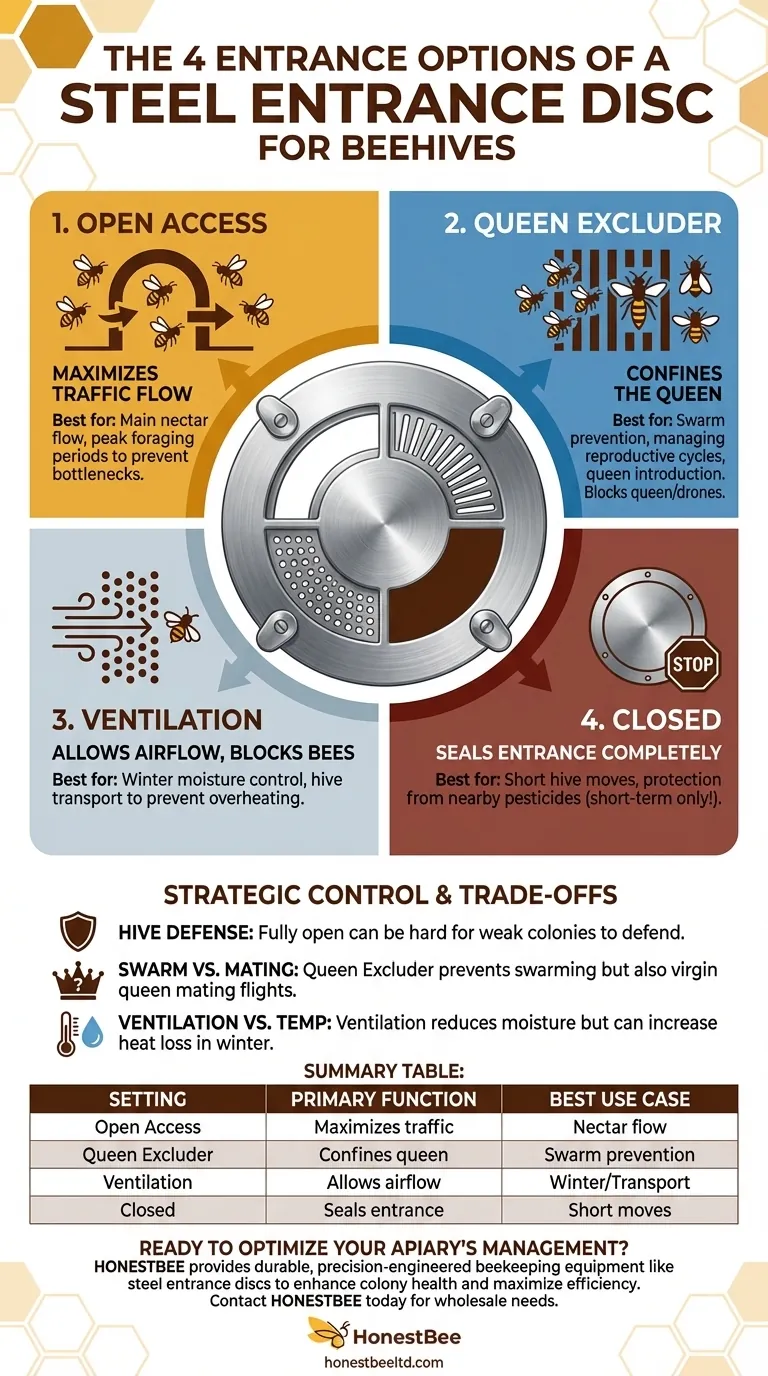
Related Products
- Steel Round Disc Entrance Reducer for Flexzion Bee Hive Nuc Box Gate
- Beehive Entrance Reducer Guardian Metal Hive Entrance for Bees
- Multi-Functional Rotary Hive Entrance Disc for Beekeeping
- Multi-Functional Sliding Hive Entrance for Beekeeping
- Professional Ant-Proof Beehive Stand with Integrated Moat for Beekeeping
People Also Ask
- What is the purpose of a closed with ventilation setting on a round beehive entrance disc? Protect Your Hive During Transport & Emergencies
- What are the benefits of a circular metal beehive entrance disc? Enhance Hive Security & Health
- How does the outer cover create an upper entrance? Master Hive Ventilation & Congestion Control
- What is the purpose of the steel entrance disc? Master Hive Traffic Control & Security
- What happens if you seal an entrance to a bee hive? Avoid a Costly Structural Disaster


